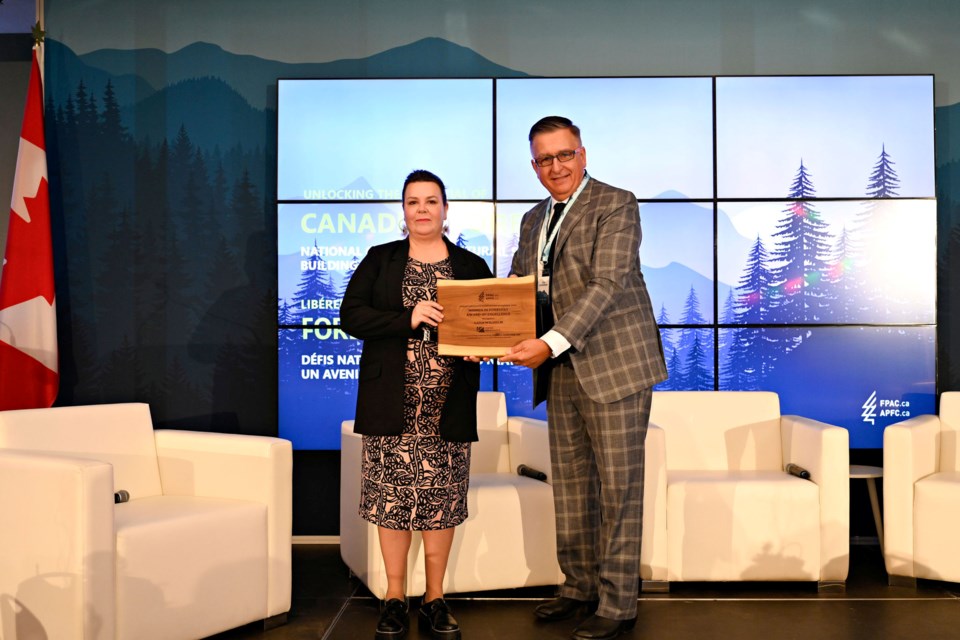The largest employer in Sault Ste. Marie is transforming its coal-fired production processes into a modern operation that emits far less carbon and other pollutants. Today, we look at how Algoma Steel is banking on a renaissance with a multimillion-dollar plan to go electric.
Fertilizer producer Nutrien Ltd. is operations in Brazil, the world’s largest agricultural exporter, after a series of setbacks in the region that included a US$220-million loss on unauthorized derivative trades. Online tutoring company Paper Education Co.

Inc. its entire Canadian tutor work force, affecting hundreds of people, weeks after laying off nearly half its head-office staff and replacing CEO Philip Cutler. A Canadian trade union says employer abuse of foreign workers is in the construction sector and Ottawa should pause the temporary foreign worker program entirely until an independent audit is conducted.
Asset manager Onex Corp. built on its history of investments in the aerospace industry aircraft logistics company Farsound Aviation Ltd. from a Hong Kong private equity fund.
In the late 1800s, a wildly entrepreneurial man named Frances Hector Clergue struck north from the United States in search of new ways to spend the money of his affluent benefactors, who were keen to build on their newfound wealth from coal and steel. He saw potential in Canada’s natural resources, and explored Ontario for a few years before landing in , a town that had fallen on hard times but had the elements around it to make coal, and the support of a country eager to invest in made-in-Canada manufacturing infrastructure. (Stop me if you’ve heard this one before: Ottawa was enforcing a policy of protecting Canadian industry by imposing high taxes on foreign imports.
) Clergue was happy to oblige these clients, pitching the purchase of the town’s defunct hydro company with an aim to expand it. From there, he could build other companies in support of that one, and other companies in support of those. And so he did – and the story of Algoma ends here.
For Clergue, anyway. While he “possessed a knack for recognizing the potential of a new technology,” according to , another wrote that he had “the courage of ignorance” that obscured a potential lack of business acumen. That might have been a contributing factor to the cracks that appeared in his businesses, which faltered to the point that he was removed from them entirely within a few years.
Clergue’s subplot would find him turning to what The Canadian Encyclopedia “a series of ill-starred business ventures in Canada, the U.S., Russia and the Far East.
” But after decades of weathering financial troubles, new owners, new names, technological upgrades, expansions, recessions and restructurings, the story of Algoma Steel is still being told today. And it’s a truly fascinating one, captured in by Jeffrey Jones and photographer Deborah Baic. More than a century after finding itself caught up in a country urgently building out its own industrial sector, the company now finds itself at the centre of a global effort to fight climate change.
Canada has to hit aggressive targets, which means changes for its biggest manufacturers. Steelmakers, high on the list of heavy emitters, face a certain paradox: They are being asked to lower emissions while simultaneously making a product necessary for building a “greener” infrastructure. “You need steel to make all the things that we’re going to require in a low-carbon economy, whether that has to do with more infrastructure for electricity, more electric vehicles, more of what’s needed to make those electric vehicles run,” Jones told me.
“So the quest for the industrial sector is to allow the manufacture of steel, but find ways to mitigate its climate impact and the emissions that it generates.” Algoma’s plan is to install two electric arc furnaces: technology that replaces the dirty work of coking coal. Instead, with a large enough charge of electricity, scrap metal becomes green steel.
When fully online, the amount of CO2 emissions that the company expects to reduce equates to more than a tenth of Canada’s 2030 goal under the Paris Agreement. That isn’t to say Algoma (and the wider steel sector, which is largely embracing the technology) has created alchemy: The increased volume that the company expects from this shift has raised concerns that more fuel-heavy shipping will follow. Cleaning chemicals out of the scrap metal could cause gases to be released.
And then there’s a familiar foe that seems attached to every new technology on this scale: “There are drawbacks,” Jones said. “And one of them happens to be the fact that you’re not going to require as many people to make steel.” It’s a tricky balance.
And as Jones and Baic show, Algoma’s ability to find that harmony is crucial not only to the town that steel built, but to the country that relies on it. You can find the full story . The market value of Berkshire Hathaway Inc.
this week, reflecting investor confidence in the conglomerate that Warren Buffett built over nearly six decades into what many consider a proxy for the American economy. Berkshire joined six other U.S.
companies, all tied to the technology sector: Apple, Nvidia, Microsoft, Google parent Alphabet, Amazon.com and Facebook parent Meta Platforms. Will Berkshire be invited to the group chat? Earnings include Canadian Western Bank, which is in the midst of a sale to rival National Bank of Canada.
Results from Laurentian Bank, which also reports before the open, come as the to improve its fortunes after a tumultuous period. Travelling over the long weekend? The Canada Border Services Agency has . The U.
S. recently dropped for dogs after facing heavy pushbark. Canada’s public museums are with more works than they could ever show or easily store, thanks to decades of tax breaks to private donors.
The result: intense pressure to renovate and grow, or sell and diversify. The tale of Riggs Bank, once known as “the bank of presidents” in the United States, is a reminder of how money-laundering risks can morph into an existential crisis for lenders, Global markets as traders awaited today’s release of key U.S.
core personal consumption expenditures [PCE], the Federal Reserve’s favoured inflation measure. Wall Street and TSX futures pointed higher on rate-cut optimism. Overseas, the pan-European STOXX 600 was up 0.
33 per cent in morning trading. Britain’s FTSE 100 rose 0.36 per cent, Germany’s DAX gained 0.
2 per cent and France’s CAC 40 advanced 0.48 per cent. In Asia, Japan’s Nikkei closed 0.
74 per cent higher, while Hong Kong’s Hang Seng rose 1.14 per cent. The Canadian dollar traded at 74.
20 U.S. cents.
.
Business
Business Brief: An electrifying future for a storied steel company
Also in today’s edition: A new member of the $1-trillion club














